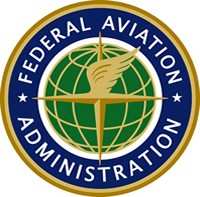Partners With Aviation Community And Safety Advocates To Raise Awareness
As part of the U.S. Department of Transportation’s National Transportation Week and to kick off the summer travel season, the FAA has launched an education effort to help parents and caregivers make informed choices about their child’s safety when they fly. “Millions of people will take to the skies this summer, and we are doing everything we can to keep air travelers as safe as possible,” said U.S. Transportation Secretary Ray LaHood. “We want to make sure parents and caregivers have the best information to keep their children safe when they travel.”

“It’s important to remind everyone that the safest place for a small child on an airplane is in an approved child safety seat, not on an adult’s lap,” said Acting FAA Administrator Michael Huerta.
The FAA has developed a new web site and online information toolkit with information about how to keep children safe when traveling by air. The site includes a downloadable tip sheet for parents and caregivers and a video demonstration on how to properly install a child safety seat on an airplane. The website also includes helpful details about FAA-approved child harness devices, and links to frequently asked questions. The FAA is working with Airlines for America, the Association of Flight Attendants, Consumers Union, and the American Academy of Pediatrics to share this safety information with parents and caregivers.
According to Consumers Union, “For years Consumer Reports has advocated that all passengers should be properly restrained onboard commercial aircraft, including children under 2. We support the Department of Transportation’s educational efforts, so that parents and caregivers can make informed decisions about using child restraint systems when flying. Consumer Reports also urges the airline industry to support these efforts by providing transparent information on child restraint system policies and compatibility.”
When purchasing airline tickets, parents and caregivers should contact the air carrier to see if there are any discounts available for children since buying a ticket for a child is the only way to guarantee that a child safety seat can be used during flight. "The top priority of America's airlines is the safety of our passengers and crew, and we are pleased to be a part of the important FAA educational awareness campaign, encouraging parents to help keep our smallest passengers safe with approved child safety seats," said Airlines for America President and CEO Nicholas E. Calio.
Before flying, parents and caregivers should check to make sure that their child restraint system is approved for use on an aircraft. This approval should be printed on the system’s information label or on the device itself. “As first responders in the cabin, a Flight Attendant’s foremost responsibility is to help ensure the safety and security of all passengers. Children should have the same protection adults have in the airplane cabin and by using an approved child restraint device, even our most vulnerable passengers will have much-needed protection in the event of an emergency,” said Association of Flight Attendants International President Veda Shook.
The FAA recommends that a child weighing less than 20 pounds use a rear-facing child restraint system. A forward facing child safety seat should be used for children weighing between 20 and 40 pounds. The FAA has also approved one harness-type device for children weighing between 22 to 44 pounds. "The AAP strongly recommends that children should always ride properly restrained on every trip, on the ground and in the air. For this reason, we are pleased to support the FAA's efforts to educate parents on safe airplane travel,” said Robert W. Block, MD, FAAP, president, American Academy of Pediatrics. “The safest place for a child under two on an airplane is in a child safety seat, not on a parent’s lap. Whenever possible, parents should travel with a safety seat for use before, during and after a plane ride.”
In December 2010, a group of aviation stakeholders known as the Future of Aviation Advisory Committee (FAAC) delivered 23 recommendations to the Secretary and FAA Administrator on workforce development, competition and viability, financing of aviation systems, environmental concerns, and safety. Based on some of those recommendations, the FAA is stepping up efforts to educate parents about the importance of using a child restraint for air travel.
 Senator Pushes FAA to Accelerate Rocket Launch Licensing
Senator Pushes FAA to Accelerate Rocket Launch Licensing Classic Aero-TV: RJ Gritter - Part of Aviations Bright New Future
Classic Aero-TV: RJ Gritter - Part of Aviations Bright New Future Aero-FAQ: Dave Juwel's Aviation Marketing Stories -- ITBOA BNITBOB
Aero-FAQ: Dave Juwel's Aviation Marketing Stories -- ITBOA BNITBOB ANN's Daily Aero-Linx (10.27.24)
ANN's Daily Aero-Linx (10.27.24) ANN's Daily Aero-Term (10.27.24): Clearance Void If Not Off By (Time)
ANN's Daily Aero-Term (10.27.24): Clearance Void If Not Off By (Time)



